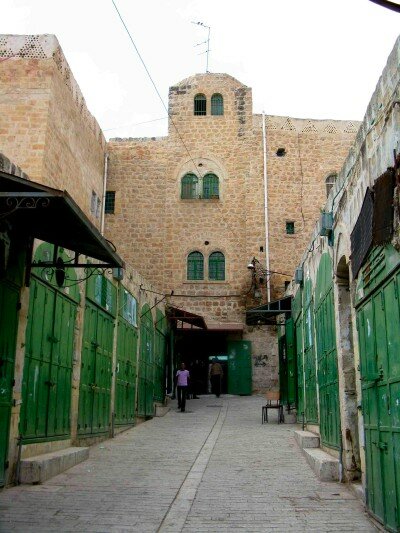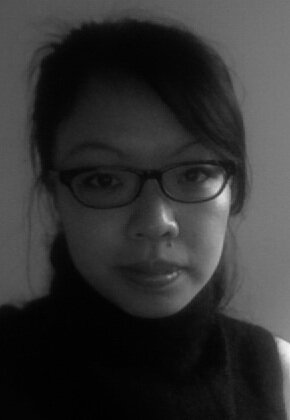Hebron - Where the Jews and Palestinians Met and Parted Ways
In Hebron, Jewish settlers and Palestinians live side by side, and suffer for this proximity. Yet, while it is both an object lesson in why a deal between Israel and the Palestinians remains so elusive, Hebron may by faith, be the best hope for peaceful co-existence.

The Old City of Hebron stands unique in the Middle East. In the day, when it should be busy with activity, there are neither bustling bazaars nor vibrant exchanges. Most of the shop fronts are shut, with just a few close to the mosque open, selling juices, incense and handicraft to tourists. By Middle Eastern standards, this is a dead town.
For two days in a week though, it would come alive. On Fridays, the Muslims would throng the covered lanes of the Old City on their way to the mosque. On Saturdays, Jewish settlers would make their way through the same alleyways on their holy day of rest.

The deserted Old City of Hebron
For both the Jews and the Palestinians, this is a sacred city. Hebron is where the prophet Abraham and his family lived. Abraham had two sons, Issac and Ishmael, and from the two descended the two races we now know as the Jews and the Arabs. Hence this is the geographical point where the two religions originated. The Palestinians name it “al-Halil”, after Abraham, who was known as the companion or “Halil” of God. Hebron is its Jewish name.
With its significance to both peoples, Hebron seems destined to be a flashpoint in the Israeli-Palestinian conflict here. In 1997, it became the last West Bank city to be turned over to the control of the Palestinian Authority. Under the Hebron Accords signed by Benjamin Netanyahu in his first outing as Israeli prime minister and the late Palestinian president Yasser Arafat, the city would be divided into two zones, H1 and H2. H1 was to comprise of the 80 percent that would be transferred to the Palestinian Authority, while the IDF would remain under the Israel Defense Force (IDF).
The Old City lies within Area H2, where unlike in H1, Israeli citizens are allowed to enter. Newly-constructed Jewish housing overlook the old Arab shops, most of which have now been closed. Some had been sealed out of security concerns that they were being used as bases for attacks against the Jews, while others have closed down because the tensed situation meant people stopped patronising businesses in this part of town.

An Israeli Defense Force outpost overlooks the Old City, where the IDF is tasked with maintaining security
Above the open-air walkways of the Old City are metal nettings which hold rocks, bottles and garbage strewn from the Jewish houses above. This is a favoured attack tactic here, like in Jerusalem. A similar construct shielded pilgrims making their way along David Street there, as Jews and Muslims threw garbage from their windows on either side down on the thoroughfare that divided Jerusalem's Jewish and Muslim quarters.
Getting rubbish thrown on them was a mild abuse for Palestinians here in Hebron. In 1994, a Jew from New York, Baruch Goldstein opened fire on praying Muslims in the mosque here built Abraham's tomb, and killed 27 Palestinians.
Today, a visit requires a stringent bag-check by IDF soldiers and a walk through not one, not two, but three metal detectors. Just last month, a 19-year-old Palestinian boy was shot, when he ran through the last detector. He had been late for prayers and did not heed the soldiers' commands to stop. They opened fire and he was killed.
A guide from the Palestinian Hebron Rehabilitation Committee explained the security procedure as an example of the oppressive controls imposed by the IDF on Muslims heading to the mosque. It should however be pointed out that these security measures only serve to protect Muslims, since Jews are barred from the mosque, except on ten Jewish holy days.
This is not to say that the Palestinian grievances are unfounded.
It is now harvest season and international volunteers have been accompanying Palestinian farmers to their plantations to protect them from attacks by settlers. British and American faith-based groups have also been escorting children to school, especially where their routes require them to pass by the four Israeli settlements that surround the old city of Hebron.
There is a video taken in 2005 of Israeli settler children throwing rocks and shoving Palestinian children and teachers on their way to the Qurtaba School which is situated between two settlements. The Palestinian children cowered behind one another as their teachers attempted to shield them and ward off the attacks.
I brought up this incident at a meeting with David Wilder, spokesperson of 15 years for the Jewish community in Hebron. Born in the US, he moved here in 1974 when he was just 19. He later married an Israeli woman and is now the proud father of seven and grandfather of ten
“Our children are not bashful and shy. If someone throws something at them that doesn't belong to them, they want to give it back,” he said.
He acknowledged there was “no love lost between the Jewish children and the children of the Arabs.” But there was “a difference between kids fighting with each other and shooting.”
Wilder had his own stories of being attacked by the Palestinians. Two of his children had narrowly missed bullets shot at them through their window.

Bicycles and prams lie outside an apartment in the Jewish part of Hebron
“Before the Second Intifada (late 2000- 2002), there was traffic in the streets. Then they were shooting at us from the hills.”
“There were times of tremendous tensions,” he continued. “There had been a number of provocations. When we were being attacked, and an enemy flag is flying, expressing their desire to expel you from your home, that's provocation.”


















